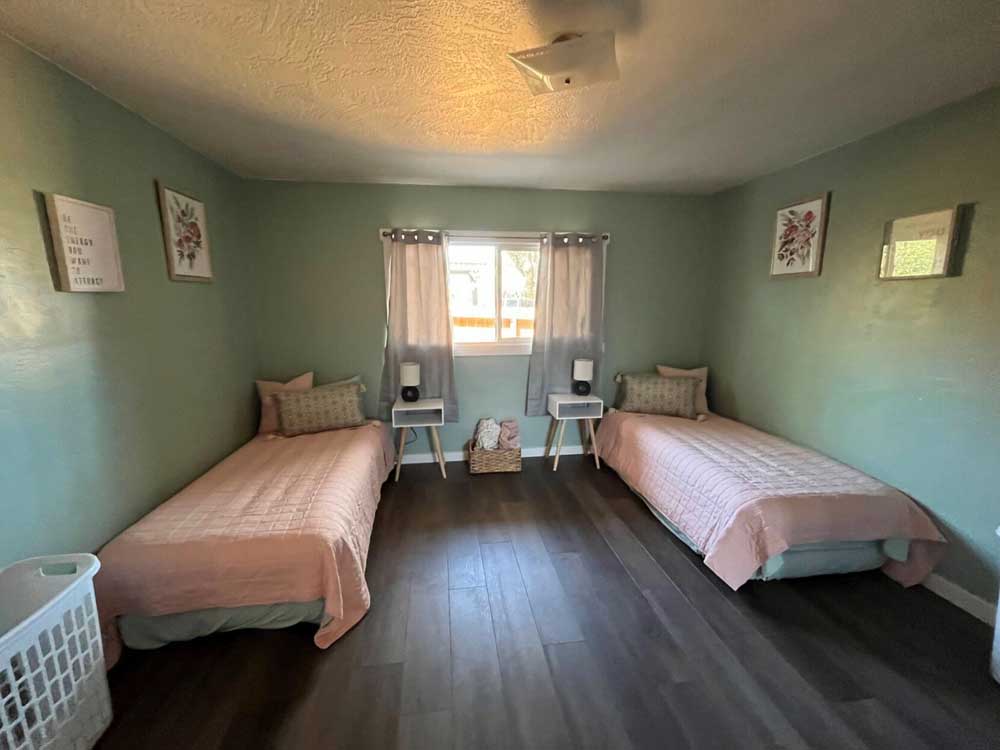Oregon lawmaker wants to expand emergency housing program for people with addictions
Published 9:30 am Saturday, January 18, 2025

- A bedroom for a waitlist emergency housing program in Medford that serves pregnant women waiting for a slot to open in a residential addiction treatment facility. Oasis Center of the Rogue Valley, a nonprofit clinic, operates the housing program.
In southern Oregon, an emergency housing program shelters people while they are waiting to enter residential addiction treatment.
Two providers teamed up to start the program, waitlist emergency housing, within the last two years. The goal is to get people in addiction off the streets and sheltered in a safe environment while they are waiting to enter a residential treatment facility. The results so far: 129 people who entered emergency housing moved directly into residential treatment.
Rep. Pam Marsh, D-Ashland, wants to see the model replicated on a wider scale. She plans to propose House Bill 3146 in the 2025 session, which would seek $10 million to start the program as a pilot in an estimated five to eight sites across the state.
If waitlist emergency housing is replicated throughout Oregon, it would potentially fill a gap in the system of care for unsheltered Oregonians in drug addiction. Oregon is short 3,700 treatment beds for behavioral health and addiction programs, according to a state report released in June.
Those who need residential treatment programs often face waitlists that can range from a week to months. As a result, homeless people in addiction wait for a bed to open up while living in the streets. And when a facility has an opening, providers often struggle to contact the person, who may have a disconnected phone.
“When a bed is available, those people are nowhere to be found,” Marsh said in an interview. “It’s a very common pattern. We lose people who are motivated when we can’t place them immediately into residential treatment.”
How it works
In Jackson County, two organizations — Oasis Center of the Rogue Valley and OnTrack Rogue Valley — provide waitlist emergency housing at two locations in Medford.
Both organizations have started the emergency housing programs since 2023.
Oasis Center, a nonprofit family medical clinic, provides prenatal care to pregnant women who need treatment and care for drug addiction. With three apartments located in its clinic building, the center can provide shelter for six people waiting to enter residential treatment. Two people each share one apartment.
OnTrack, which provides residential and outpatient addiction treatment services, has an apartment building in Medford with 10 beds available for people on a waitlist for residential addiction treatment programs, whether through OnTrack or another provider.
The waitlist emergency housing is not a replacement for residential treatment, but it does play a vital role in keeping people out of harm’s way while they are motivated and waiting to enter residential treatment, providers say.
The emergency housing program is comparable to saving a drowning person when they come up to the surface of the water, said Dr. Kerri Hecox, medical director of Oasis Center.
“You have to catch them when they’re at the surface,” Hecox said. “And so that’s really where the emergency lodging idea was born.”
The emergency housing is for people in crisis waiting for help, but there are still expectations and requirements. To qualify, a person has to be on a waitlist for residential treatment and enter that program when it can take them.
They cannot have overnight guests.
In other ways, the providers recognize their clients are at the start of a recovery — not near the finish line.
As a result, they are not required to be in treatment or stop using drugs. However, they cannot use drugs on the premises of the housing or openly display drug paraphernalia.
Some take outpatient treatment while waiting for residential services and others do not.
“It’s a transitional place for us to be able to have somewhere for people to go who really want to make that next step to get into sobriety,” Hecox said.
Majority enter treatment
The needs are high.
Sommer Wolcott, executive director of OnTrack, said her organization’s three residential treatment programs, which have 50 beds total, have 320 people on waitlists to get help.
“Most of them are unhoused,” Wolcott said. “They have come from all sorts of terrible circumstances and have all sorts of trauma. They have taken this step. They’ve gone in, they want help. They want treatment. They’ve completed an assessment, they’ve done everything they need to do, only to be told, ‘Great, we’ll put you on this list.’”
Once on the list, people can disappear when their name comes up. The provider may have to call 15 or 20 people on the list before finding someone to fill a bed, Wolcott said.
That can be for a variety of reasons. They may have used a burner phone, previously relied upon a friend’s phone or moved elsewhere.
Between both programs, 204 people have moved in and moved out of the housing. Out of that figure, 129 of them moved directly into residential treatment care. That’s a successful transition for 63%.
“It’s mind-blowing how successful it is in helping people move from really unfortunate circumstances to being able to get into treatment beds,” Wolcott said.
Proposal details
Under Marsh’s proposal, applicants could seek grants to cover operational and capital expenses like renovating buildings.
Grants would go to residential addiction treatment providers or behavioral health organizations with experience in the field. Based on preliminary estimates, funding for five sites would cover 10 beds in each spot, or 50 total statewide.
Marsh said it’s crucial for the state to look for ways to innovate as it grapples with the addiction crisis and the shortage of residential treatment beds.








